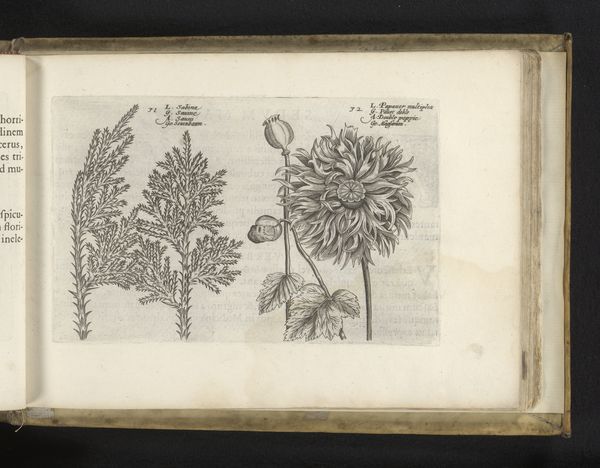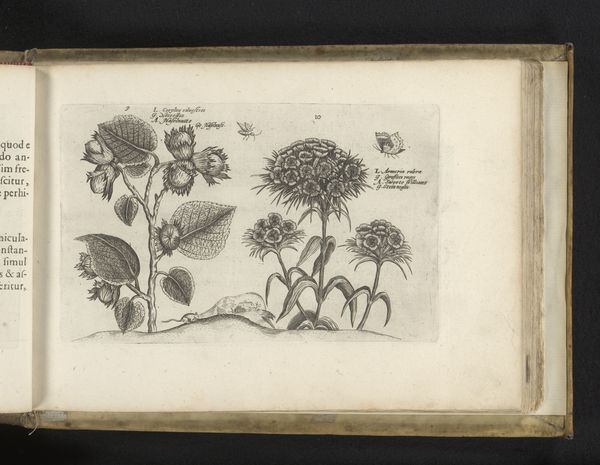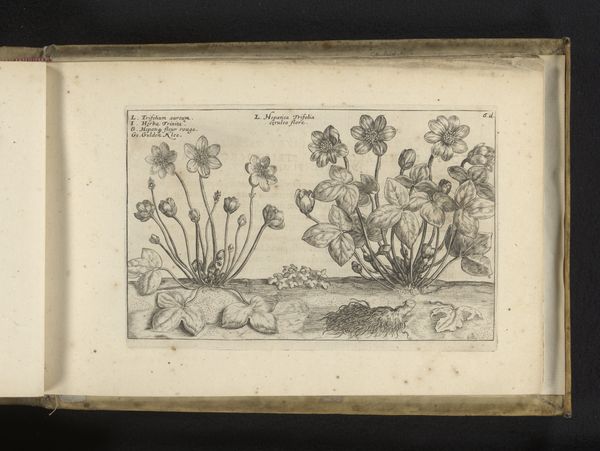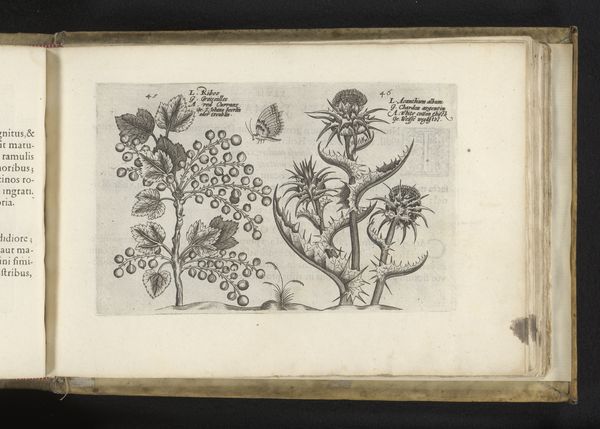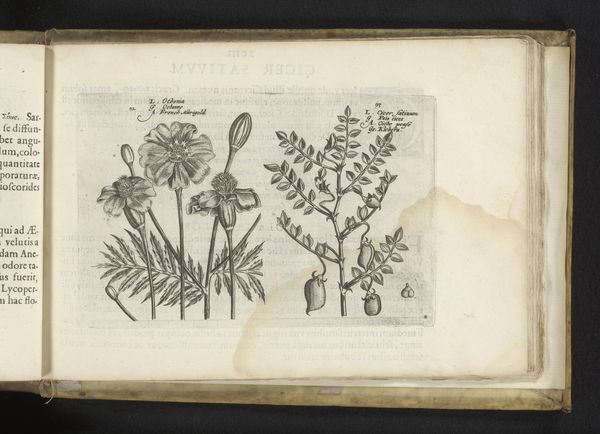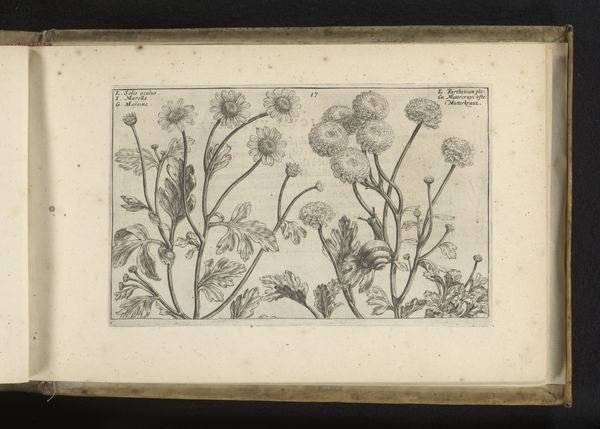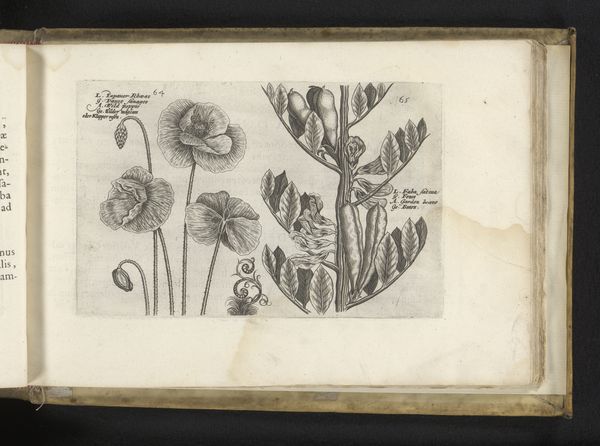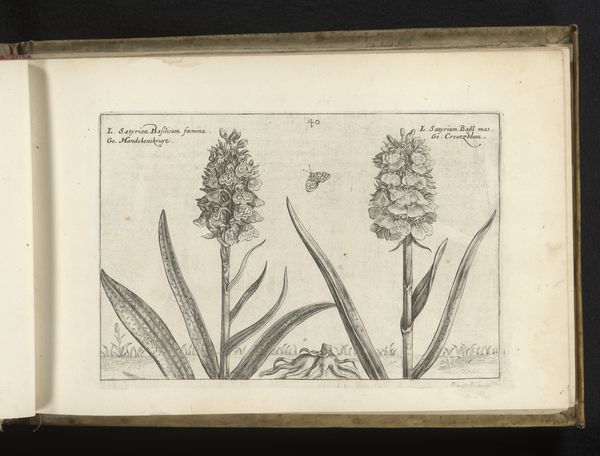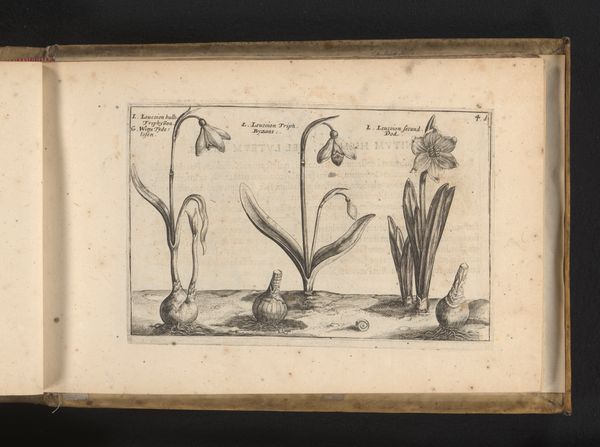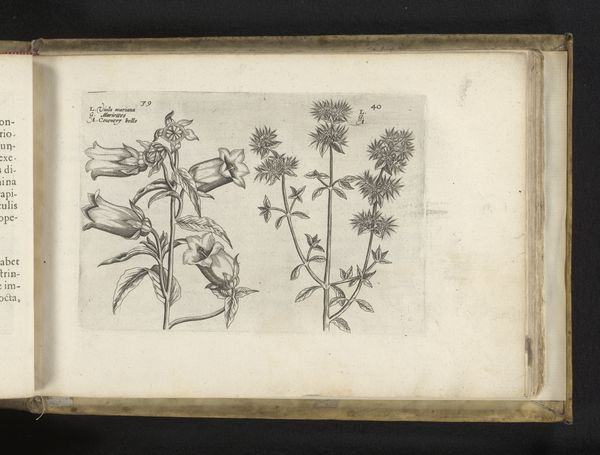
drawing, paper, pen, engraving
#
drawing
#
aged paper
#
toned paper
#
sketch book
#
flower
#
figuration
#
paper
#
personal sketchbook
#
pen-ink sketch
#
pen and pencil
#
line
#
pen work
#
sketchbook drawing
#
pen
#
storyboard and sketchbook work
#
northern-renaissance
#
sketchbook art
#
engraving
Dimensions: height 130 mm, width 199 mm
Copyright: Rijks Museum: Open Domain
Curator: Here we have "Tarwe en tuinanjer," Wheat and Carnation, created in 1617 by Crispijn van de Passe the Younger. It is currently held in the Rijksmuseum. Editor: The first thing I notice is the beautiful detail. It has an almost dreamlike quality because of its muted color palette, doesn't it? A scientific illustration somehow imbued with something more personal. Curator: Absolutely. Van de Passe worked primarily as an engraver, and it is apparent how masterful he was at his craft through the rendering of such intricate detail. I’m fascinated by how the artist used line work to show textures, particularly the velvety quality of the carnations contrasted with the bristly heads of the wheat. And the small bird is also quite poignant. Editor: Right, the contrast draws attention to different symbols; it reminds us that these natural elements have layered meanings throughout history. Wheat can be seen to represent life and prosperity and carnations love, beauty, or even pride, each flower hinting at distinct social strata. Given the time it was created, what socio-political narratives could it be speaking to? Curator: It's quite probable that these natural elements, arranged with such attention, reflect both a scientific interest and a deeper, symbolic resonance in Northern Renaissance culture. During that time, botanical drawings were not just about documenting the natural world; they also contained moral and spiritual allegories. Editor: That’s insightful. This drawing really feels like it straddles the line between scientific study and emblematic imagery. I find it so striking how the paper's aging seems to amplify that delicate balance—it carries the marks of time, adding layers to how we perceive nature’s beauty and ephemerality. What remains beyond scientific inquiry, in this image, might very well speak to enduring struggles around humanism versus oppression within certain European communities. Curator: Indeed, the marks of time upon this piece underscore its own story—much like the endurance of the species depicted. Editor: A lasting statement about survival and symbolism, then, interwoven across generations.
Comments
No comments
Be the first to comment and join the conversation on the ultimate creative platform.
